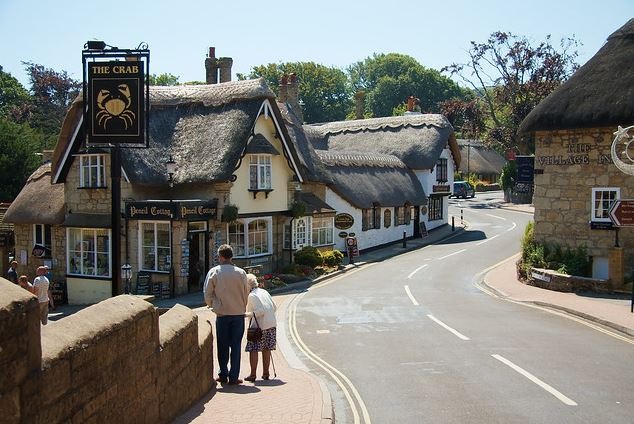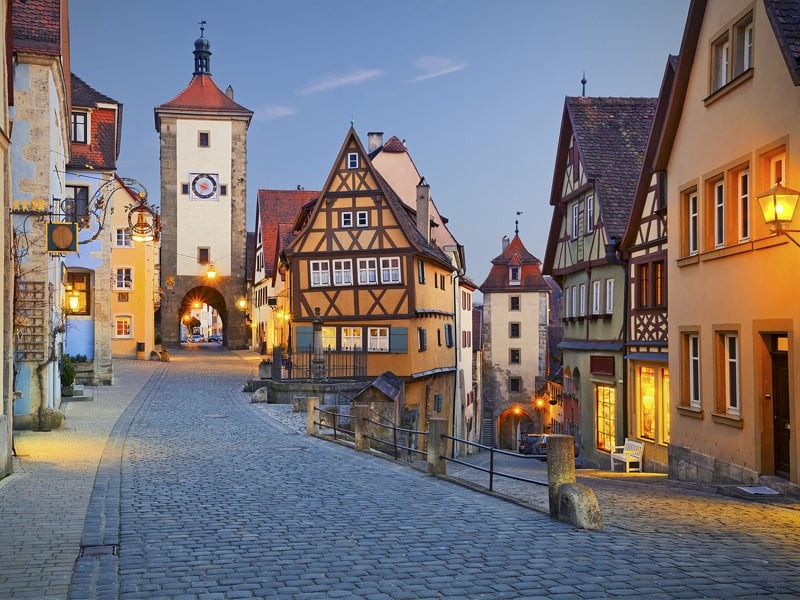
Explore Lincolnshire and Leicestershire this Christmas without the need for a car, with a plethora of attractions from nature reserves to medieval towns.
The Elizabeth Salon at Belvoir Castle is adorned with a festive scene suggesting that the eight milkmaids recently celebrated, creating a pastel-colored stack of pails, cows, and three-legged stools beneath the ornate painted ceiling. In the adjacent room, a silver centrepiece showcases seven sculptural swans gracefully swimming above a grand banqueting table, while six lifesize geese have artistically laid Fabergé-style eggs within sparkling bullrush-fringed nests.
Designed by Charlotte Lloyd Webber, renowned for her decorative touch at Bamburgh Castle in Northumberland and Castle Howard in North Yorkshire, Belvoir Castle boasts a magnificently theatrical representation of the 12 Days of Christmas. The exhibit features over 100 trees and thousands of baubles, with the five gold rings taking the form of a large kinetic sculpture twirling above Belvoir’s impressive art collection. Admission starts from £10 for children and £19 for adults (belvoircastle.com).
Even without its seasonal embellishments, Belvoir Castle exudes opulence with its lavish gold and brocade decor. Peacock motifs, derived from the owners’ family crest, adorn various elements, including carpets, carvings, and gilded stuccowork. The Aviary Tearoom continues the peacock theme, offering a festive tea experience that includes gold and purple macarons, as well as smoked cheddar sandwiches with homemade spiced pear chutney (priced at £70 for two, plus entrance).
As implied by its Norman-French name, Belvoir Castle’s most prized feature is the expansive view visible through its windows. On a clear day, one can discern the towers of Lincoln Cathedral on the distant horizon. South Kesteven, the Lincolnshire region that encompasses nearby Grantham and Stamford with their honey-stone walls, is an ideal destination for a winter getaway. Its towns and villages exude a Christmas charm reminiscent of an imaginary Disney version of England. With fast and frequent trains available in Grantham, my plan is to enjoy a car-free winter escape, featuring invigorating walks, visits to medieval churches, and cozy fireside pints.
This morning’s train journey from Peterborough to Grantham took a mere 20 minutes. However, navigating from the station to Belvoir without a car posed a challenge. I opted for a demand-responsive minibus through Callconnect, a service connecting bus-less villages in Lincolnshire. While the service is in the process of introducing an app, I had to call the busy helpline to secure a slot. Once booked, the journey becomes trackable, and fares, akin to regular buses, are capped at £2.
I had the option to utilize the Callconnect service for my return from Belvoir, but the allure of golden winter sunshine beckons me to embark on a scenic hike of a couple of miles to Woolsthorpe by Belvoir, where I plan to catch bus 9 instead. The walk proves to be idyllic, offering enchanting views across Capability Brown’s parkland speckled with sheep, leading up to the castle perched on the hilltop. After savoring a ginger beer at the Chequers Inn, I wait at the bus stop only to notice the bus ominously vanishing from the tracking map on the website bustimes.org. Ultimately, I catch a lift with a passing van.
Returning to Grantham, there’s just enough time to marvel at the towering St Wulfram church, renowned for its dramatic blue-and-gold interior, before catching my train. At Peterborough Cathedral, featuring a beautiful vaulted ceiling, the light artists Luxmuralis are currently installing a seasonal son-et-lumière, priced at £8 for adults and £6.50 for kids.
Bus 201, traveling from Peterborough to Stamford, makes a stop in Barnack. Here, the village church boasts a Romanesque sculpture and Saxon tower, while the recently renovated Millstone pub offers a cozy atmosphere with a log fire and a gourmet menu. A brief stroll from the pub leads you to Hills and Holes nature reserve, spanning 20 hectares (50 acres) of hummocky, biodiverse land that once served as a medieval quarry. This site, where creamy limestone known as Barnack rag was extracted, played a pivotal role in constructing Cambridge colleges, as well as Ely and Peterborough cathedrals. In the present day, the grassy hollows house rare plants, including orchids and purple pasqueflowers that bloom around Easter. In November, visitors can witness autumn gentians amidst the cropped grass, harebells swaying in the wind, and cascading burnished leaves adorning tall silver birches.
I’m lodging at Stamford’s William Cecil hotel, named after Elizabeth I’s treasurer, who constructed the nearby Burghley House. The hotel boasts two dozen luxurious rooms accessed through a labyrinth of corridors and a grand wooden staircase (starting from approximately £120 for bed and breakfast, thewilliamcecil.co.uk). With Burghley Park right at the doorstep and new walking trails in development, the location offers a picturesque setting.

The following morning, I take a leisurely stroll past ancient trees and elegant neoclassical bridges within Burghley Park. Another creation by Capability Brown, the serpentine lake and the artfully naturalized deer park envelop an impressive Elizabethan mansion (deer park admission is free, burghley.co.uk).
This year marks the first time Burghley is opening its gardens on winter weekends. The gardens are adorned with vibrant berried shrubs, heavy-headed dahlias, and lipstick-pink cyclamen beneath coppery oak trees. The Garden of Surprises serves as an enchanting centerpiece for a delightful stroll, featuring playful water features amidst yellow kingcups and delicate metal leaves. The garden also houses a mirror maze, misty grotto, and interactive obelisks representing the elements (gardens priced at £7.50 for children and £9 for adults).



